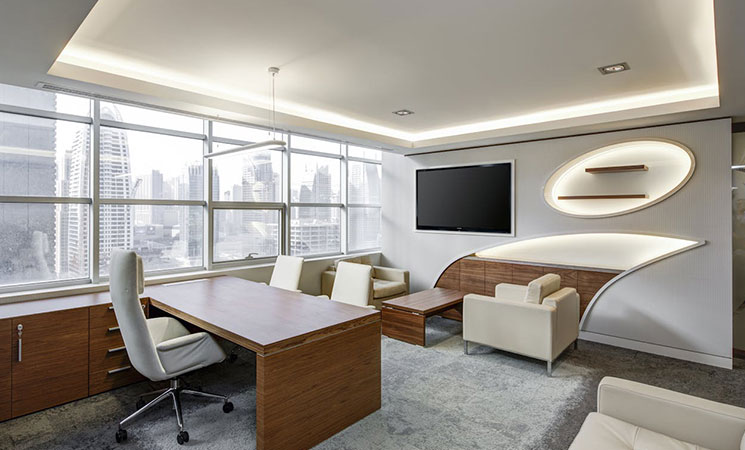Creating a work space that actually makes you want to sit down and focus is no small thing. It takes more than just a good chair and a sleek desk. A truly elevated office feels layered, personal, and rich with character. And nothing delivers that better than antiques. They’re not just beautiful—they tell stories, and those stories live in the room with you.
While modern trends come and go, antiques never feel out of place. When chosen well, they make your office feel grounded, refined, and undeniably unique. Whether you’re styling a corner nook or a full-blown home office, adding pieces with history can completely shift the atmosphere. Here’s how to bring that timeless, luxurious energy into your space—without overthinking it.
Start With One Statement Piece and Build Around It
You don’t need a room full of antiques to make an impact. One striking piece can anchor everything else. Think of a 19th-century writing desk, a worn-in leather club chair, or an aged map in a carved frame. These pieces have presence. They were made in a time when furniture was built to last, often by hand, and you can feel that energy the moment you walk in.
Let that one piece set the tone. Then build around it with things that balance old and new. A vintage banker’s lamp next to a minimalist bookshelf. A mid-century cabinet below your modern monitor. The goal is to create contrast that feels warm, not chaotic. The antique doesn’t have to match anything—it just needs to feel at home in the space.
Let Patina and Imperfection Work in Your Favor
There’s something weirdly comforting about furniture that’s lived a little. The tiny scratches, the faded edges, the drawer that sticks just slightly—these imperfections make antiques feel alive. They’re proof that this piece had a whole life before it came to you.
Instead of covering every scuff or polishing the wood until it shines like a showroom piece, let those marks breathe. They add texture and honesty to the room. An antique filing cabinet that’s dented just right. A wooden armchair with faded velvet cushions. These things speak. They make your office feel more like a lived-in study and less like a generic workspace.
And here’s the thing—you’re allowed to mix eras. A Victorian side table can sit under a 1970s abstract print. That blend of time periods makes the space feel collected, not decorated.
Buy Antiques Like a Pro—From the Comfort of Your Couch
A lot of people think you need to spend weekends at dusty flea markets or antique fairs to get the good stuff. Not true. You can find some of the most striking, character-filled antiques from your laptop. The trick is to find a high-end and reputable source and opt to buy antiques online.
This opens up your choices and lets you be picky. Want a French writing desk with brass handles? A carved English bookcase that looks straight out of a manor library? They’re out there. Shopping this way gives you access to dealers across the world, which means you’re not limited to whatever’s within driving distance.
It also means you can focus on curating the right piece instead of settling for what’s in front of you. Just be sure to check dimensions, read descriptions closely, and ask questions about condition before you hit purchase. That extra research pays off once it arrives and fits your space like it was made for it.
Use Materials That Tell a Story
The right textures can make your office feel layered without adding clutter. Antiques often bring in rich materials that just don’t get used the same way anymore. Solid woods. Aged leather. Handblown glass. Brass that’s quietly dulled over time.
These textures don’t just add style—they create atmosphere. Think about walking into a room with timber wall panels, where the grain of the wood catches light in a way that instantly feels warm and grounded. Now pair that with a velvet sofa from the 1930s, a wall-mounted shelf from an old schoolhouse, and a Persian rug with just enough fade. Suddenly, your office doesn’t feel like a space you threw together. It feels intentional.
Materials like this don’t just fill space—they add soul. They make the room feel like it has something to say. When your hands land on an old desk, or your eyes settle on the grain of carved wood, it pulls you into the moment in a way plastic and laminate never can.
Add Small Antique Touches That Quietly Shift the Mood
Not every piece needs to be a showstopper. Some of the most effective antique touches are the quiet ones. An old brass letter opener sitting on your desk. A worn leather blotter under your laptop. A set of hand-painted bookends that barely match but still hold everything in place.
These little details catch your eye slowly. You might not even notice them at first, but they work in the background, softening the room and pulling it away from feeling sterile.
Antique clocks, framed lithographs, ceramic inkwells—these are things you pick up over time. They evolve with the space. You might move them around, swap them out, or even forget where they came from. That’s part of the charm. They become part of the story your office tells over time, without needing to scream for attention.
The more layered and lived-in your space feels, the more inviting it becomes. It’s not about perfection. It’s about presence.
When a Room Has History, You Can Feel It
There’s a reason why some offices feel cold and others feel magnetic. A space full of antiques feels personal, like someone actually spent time thinking about what belonged there. And that’s the real secret: this isn’t about trends or resale value. It’s about feeling rooted.
A luxurious, timeless office doesn’t mean fancy. It means thoughtful. It means surrounding yourself with things that have been touched, used, and loved before. Things that still have something to give.
In the end, when you sit down in a space that carries stories, it’s easier to write your own.

